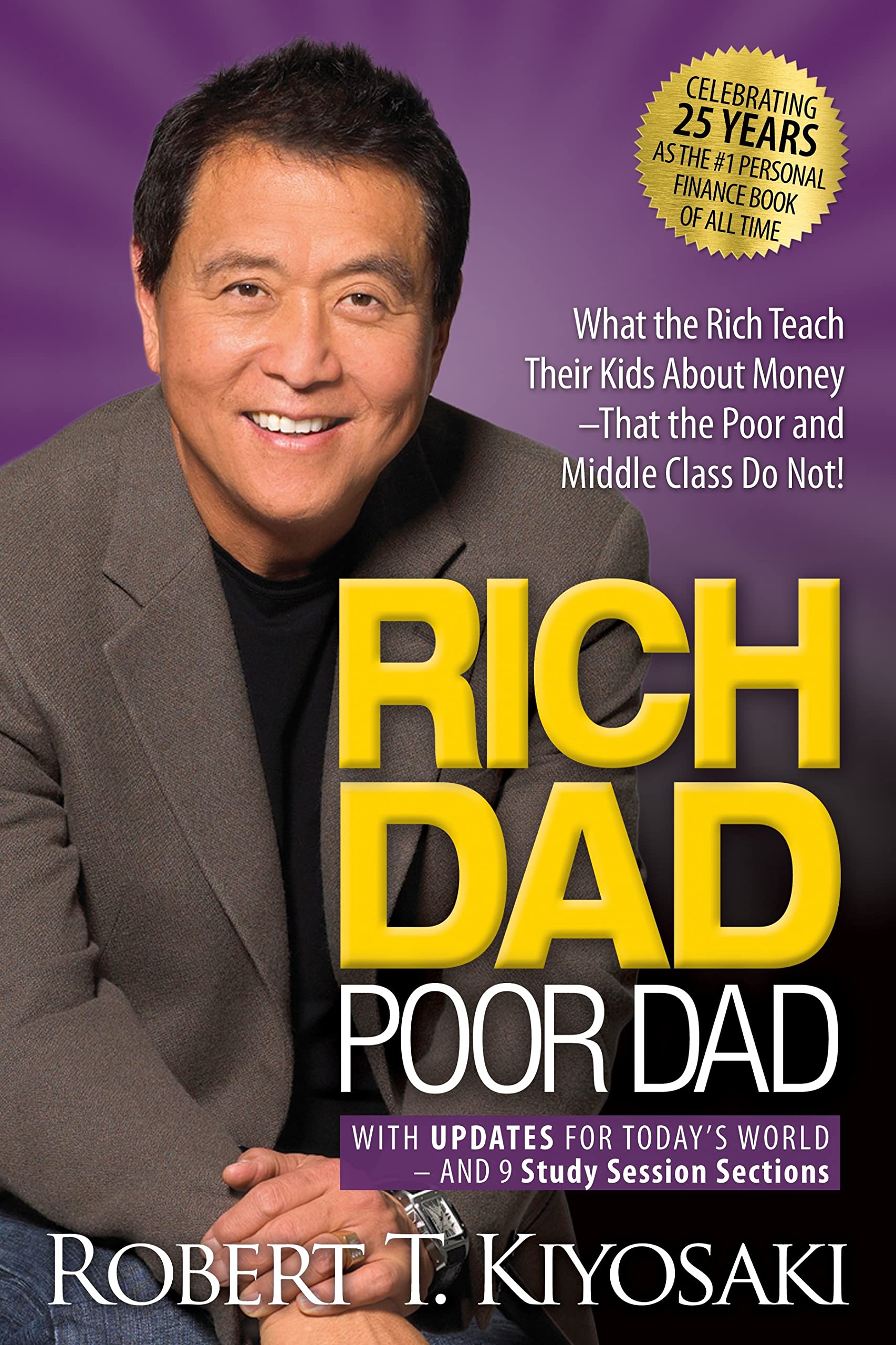Rich Dad Poor Dad by Robert Kiyosaki
The Tale of Two Dads
Once upon a time, a young boy named Robert had two father figures guiding him through life. One was his Poor Dad, his biological father, a highly educated man who worked hard as a teacher but always struggled financially. The other was his Rich Dad, the father of his best friend, who never finished school but built wealth through business and investments.
The Fork in the Road
Robert grew up watching both men closely. Poor Dad followed a traditional path, emphasizing hard work, good grades, and a steady job. He believed that wealth came from climbing the corporate ladder and saving diligently.
Rich Dad, on the other hand, taught Robert that financial freedom wasn’t about working for money—it was about making money work for you. “The rich don’t work for money,” he would say, urging Robert to think beyond a paycheck.
Lessons from Rich Dad
Rich Dad’s teachings came through simple but profound lessons:
- Learn Financial Literacy: “An asset puts money in your pocket; a liability takes money out. Always focus on acquiring assets.”
- Take Calculated Risks: “Fear of failure keeps people in the rat race. Step out, take risks, and learn from mistakes.”
- Build Wealth Creatively: “The rich use their knowledge of taxes, investments, and corporations to grow their wealth legally.”
A Different Education
While Poor Dad wanted Robert to pursue higher education, Rich Dad encouraged him to work to learn, not to earn. Robert took jobs that taught him sales and business skills, not ones that simply paid well.
The Road Less Traveled
Over time, Robert began investing in real estate, starting businesses, and studying the habits of wealthy people. He saw how small but consistent steps toward financial literacy and asset-building could lead to freedom from the rat race.
The Moral of the Story
Robert realized that the difference between his two dads wasn’t their income but their mindset. Poor Dad valued security; Rich Dad valued freedom. By adopting Rich Dad’s principles, Robert carved his path to financial independence and shared his story to inspire others.
Genre: Personal Finance
Core Idea: Wealth is built through financial literacy, smart investments, and a mindset shift from earning a paycheck to making money work for you.
Key Themes
- Contrasting Mindsets
- Poor Dad: Values job security, higher education, and saving money.
- Rich Dad: Focuses on financial independence, investing, and entrepreneurship.
- The Role of Financial Education
- Schools teach academic skills but neglect financial literacy.
- Wealthy individuals understand how assets and liabilities work.
- Building Wealth Through Assets
- Assets: Investments like stocks, real estate, and businesses that generate income.
- Avoid acquiring liabilities (e.g., luxury items) that drain resources.
- Breaking the Rat Race
- Most people trade time for money and rely on a single income source.
- True freedom comes from creating multiple streams of passive income.
- Learning Over Earning
- Prioritize jobs and opportunities that teach valuable skills, such as negotiation, sales, and leadership.
- Embracing Risk and Failure
- Fear and greed prevent people from taking financial risks.
- Failure is a stepping stone to learning and success.
Key Insights
- Financial Independence: Achieved by making money work for you, not the other way around.
- Mindset Matters: Shift from a scarcity mindset (fear of losing money) to an abundance mindset (opportunities for growth).
- Leverage Taxes and Laws: Wealthy individuals use corporate structures and investments to minimize taxes legally.
Lessons Learned
- Start early in building assets.
- Invest time in learning how money works.
- Be open to calculated risks and unconventional opportunities.
